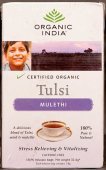Illness: 3 definitions
Introduction:
Illness means something in Hinduism, Sanskrit. If you want to know the exact meaning, history, etymology or English translation of this term then check out the descriptions on this page. Add your comment or reference to a book if you want to contribute to this summary article.
In Hinduism
Shaivism (Shaiva philosophy)
Source: SOAS University of London: Protective Rites in the Netra TantraIllness refers to one of the results of “spirit possession”.—In ninth-century Kashmir, spirit possession caused illness, sudden death, and the obstruction of worldly gains. Only through a series of optional rites (kāmya) meant to bring about worldly enjoyments (bhoga) could a practitioner assuage these evils. The Netra Tantra, a text with at least two clear layers of redaction,1 sought to alleviate these ills.

Shaiva (शैव, śaiva) or Shaivism (śaivism) represents a tradition of Hinduism worshiping Shiva as the supreme being. Closely related to Shaktism, Shaiva literature includes a range of scriptures, including Tantras, while the root of this tradition may be traced back to the ancient Vedas.
Natyashastra (theatrics and dramaturgy)
Source: Shodhganga: Elements of Art and Architecture in the Trtiyakhanda of the Visnudharmottarapurana (natya)1) Illness (i.e., crooked expression) is associated with Ābhugna: one of the “seven movements of the chest” (in Sanskrit Dramas), as conveyed through Āṅgikābhinaya: one of the four divisions of Abhinaya or “ways to convey or represent one’s emotion to others”, according to the Nāṭyaśāstra and the Viṣṇudharmottarapurāṇa, an ancient Sanskrit text which (being encyclopedic in nature) deals with a variety of cultural topics such as arts, architecture, music, grammar and astronomy.—The āṅgikābhinaya includes the histrionic representation of the limbs which is simply known as physical gestures. There are five kinds of chest movements accepted by the Viṣṇudharmottarapurāṇa as well as the Nāṭyaśāstra. The terms ābhugna and nirbhugna projects the word bhugna which means being crooked because of illness. The movement called ābhugna denotes the position in which someone acts to be killed by weapon or suffering from heart diseases. The Viṣṇudharmottarapurāṇa speaks that in this position the actor should hold the chest by hand. This posture can be observed even in modern theatrical performances.
2) Illness is associated with Dolā-hasta: one of the thirteen Combined-hand Gestures (in Indian Dramas) (known as saṃyuktahastas).—According to the Śabdakalpadruma, dolā means a kind of swing playing stuff, generally stays in gardens and made with wood. When both of the hands are hanging downward in patāka posture it is called dolā. [...] In the Nāṭyaśāstra, the dolāhasta posture is said to indicate rush, grief, faint, fit of intoxication, emotion, illness and hit by weapon.

Natyashastra (नाट्यशास्त्र, nāṭyaśāstra) refers to both the ancient Indian tradition (shastra) of performing arts, (natya—theatrics, drama, dance, music), as well as the name of a Sanskrit work dealing with these subjects. It also teaches the rules for composing Dramatic plays (nataka), construction and performance of Theater, and Poetic works (kavya).
Yoga (school of philosophy)
Source: ORA: Amanaska (king of all yogas): A Critical Edition and Annotated Translation by Jason BirchIllness can be denoted by the Sanskrit term Āmaya, according to the Amanaska Yoga treatise dealing with meditation, absorption, yogic powers and liberation.—Accordingly, as Īśvara says to Vāmadeva: “[...] [Now], I shall define the nature of that highest, mind-free absorption which arises for those devoted to constant practice. [...] By means of absorption for eight nights, the Yogin would be free from illness (nirāmaya) and, [while] abiding in the natural state [of absorption], he is not afflicted by conditions such as hunger and thirst. [...]”.

Yoga is originally considered a branch of Hindu philosophy (astika), but both ancient and modern Yoga combine the physical, mental and spiritual. Yoga teaches various physical techniques also known as āsanas (postures), used for various purposes (eg., meditation, contemplation, relaxation).
See also (Relevant definitions)
Ends with: Stillness.
Full-text (+440): Roga, Amaya, Appatanka, Atanka, Sannipataka, Anamaya, Apatava, Unmada, Maharoga, Anagatabadha, Tejovyadhi, Vyadhi, Gilanaka, Niramaya, Shitavyadhi, Aphasuka, Ajari, Vayuvyadhi, Vyadhita, Bemari.
Relevant text
Search found 232 books and stories containing Illness; (plurals include: Illnesses). You can also click to the full overview containing English textual excerpts. Below are direct links for the most relevant articles:
Vimalakirti Sutra (by Burton Watson)
Vimalakirti Nirdesa Sutra (by Charles Luk)
Chapter 5 - Manjusri’S Call On Vimalakirti
Chapter 2 - The Expedient Method (Upaya) Of Teaching
Vimalakīrti Sutra (by John R. McRae)
Chapter V - Mañjuśrī’s Condolence Visit < [Fascicle Two]
Chapter II - Skillful Means < [Fascicle One]
Chapter III - Disciples < [Fascicle One]
Mahayana Mahaparinirvana Sutra
Chapter XVIII - On Actual Illness < [Section Two]
Chapter III - On Grief < [Section One]
Chapter XIX - On Holy Actions (a) < [Section Two]
Bhesajjakkhandhaka (Chapter on Medicine) (by Hin-tak Sik)
Introduction (traditional medicine) < [Chapter 1 - Introduction]
Conclusion: Summary of Present Research < [Chapter 6 - Conclusion]
Introduction < [Chapter 5 - Diseases and Treatments in the Chapter on Medicine]
Maha Prajnaparamita Sastra (by Gelongma Karma Migme Chödrön)
Appendix 12 - The nine torments or sufferings of the Buddha < [Chapter XIV - Emission of rays]
Act 10.2: Samantaraśmi greets the Buddha Śākyamuni < [Chapter XV - The Arrival of the Bodhisattvas of the Ten Directions]
Part 2 - The true nature, the nature of phenomena and the summit of existence < [Chapter I - Explanation of Arguments]
Related products
(+14 more products available)





